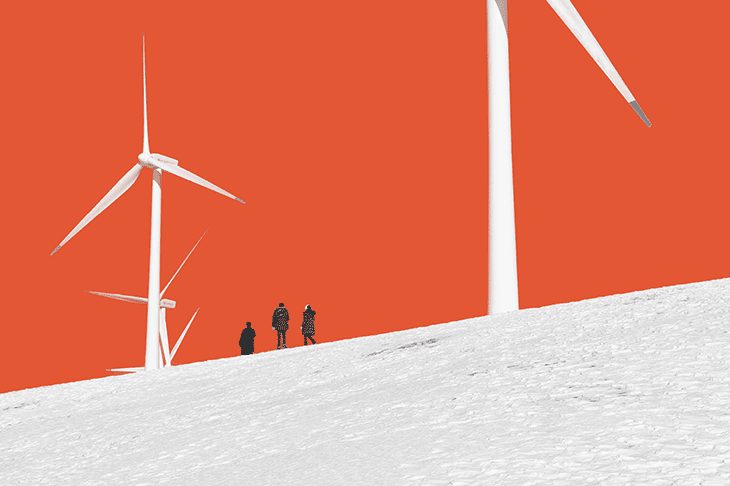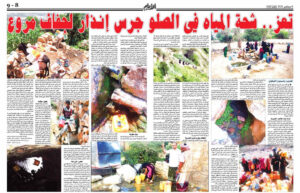In this article, we share with you a set of tips on best practices for climate journalism published by the “Website” website.“Covering Climate Now”:
1. Know your audience
More and more people are realizing that climate change is real, happening now, and caused by human activities. However, the depth of this knowledge varies widely. Understanding audiences' beliefs and feelings about climate change helps journalists deliver stories that resonate and build trust. So, meet audiences where they are – and keep listening to how their views may change as they become more exposed to the climate story. Look: Yale Program on Climate Change Communication — ' Yale Maps for Climate Opinion ' (United State) and international public opinion on climate change (worldwide)
2. Link climate changes to the causes of their occurrence
Climate change is mostly caused by the burning of oil, gas and coal, and leads to extreme heat waves, droughts, storms and sea level rise. However, these basic facts are often missing from news coverage, leaving audiences misinformed. Linking climate to the causes and consequences of climate change is a must. Doing so doesn't need to distract from the rest of the story – a few well-chosen words can do the trick. See: Your guide to climate connectivity On the Climate Coverage Now website.
3. Remember that climate is a story for every moment
Climate change is the defining story of our time. Rising global temperatures affect everything, and in turn are affected by everything from government elections, corporate decisions, and other social forces. So, good journalism should not limit climate coverage to science and weather news. No matter your niche – politics, business, health, housing, education, food, national security, entertainment, sports, you name it – there are strong climate connections to highlight. See: “ Climate coverage via pulses “Covering Climate Now.”
4. Humanizing and localizing the story
Climate change is a huge global story, but at its heart, it is a story about ordinary people and their daily lives. Audiences want coverage that reflects this, including first-hand views on how people are experiencing climate change and what they can do about it. But climate change manifests itself differently in different places, so it's important that reports highlight the specific ways in which climate change manifests itself locally, and humanize the stories.
5. Focus on climate justice stories
Marginalized groups generally suffer first and worst from heatwaves, floods and other climate impacts, yet are often left out Their voices and stories from news coverage. Good climate reporting highlights their troubles and acknowledges that they are sometimes innovators in the climate fight. Indigenous groups in particular have been environmental protectors since time immemorial, and their insights are crucial to defining climate solutions. See: guide Preparing climate justice reports For Climate Coverage Now.
6. Know the science, but talk like a real person
Journalists should know the basics of climate science when covering this story, but should be careful to avoid jargon, which is known to alienate audiences. Precise, simple and clear language is more likely to help communicate with audiences: for example, instead of a word like “biodiversity”, try “wildlife” or “nature”. Look at this guide to help you understand science. Climatology 101 “.
7. Tell the whole story, including solutions
Good climate reporting includes solutions, not just the problem. Not only does focusing on negative stories leave audiences feeling overwhelmed and isolated, it also distorts reality. The truth is that there are many solutions to climate change – not just technological solutions such as wind and solar energy, but also political, economic and cultural solutions. Reporting on good solutions is not an activity or encouragement; Rather, it examines potential solutions in order to inform the general public and policymakers about which solutions are possible, and which ones do not work.
See: “Climate Solutions Reporting Guide.” ” for Climate Now and Solutions Journalism Network.
8. Beware of greenwashing
Businesses and governments are waking up to public demands for environmentally friendly practices. However, pledges to “go green” are often little more than marketing campaigns that obscure business as usual. Be fair but skeptical of grand promises about “sustainable” products and “net zero” emissions, especially from companies that have historically been a big part of the problem.
9. Treat activists like newsmakers
In some newsrooms, there is a belief that covering activism is itself a form of activism or bias. This traditional mentality deserves a second look. Covering a protest, voter registration drive, or similar action does not make a journalist an activist any more than covering a football game makes an athlete. Journalists must treat activists as newsmakers, hold them accountable and cover them accurately and fairly, just as we do government officials and corporations.
10. Don't be fooled
Relatively new climate developments can get complicated quickly, so journalists must be extra careful not to fall into the trap of propaganda and fabrication. We know that politicians, CEOs and other powerful interests always have an agenda – complete with pre-rehearsed talking points – when they talk to the press. (The fossil fuel industry's decades of promoting climate misinformation is a glaring example.) To avoid being manipulated, just do your homework: research their past public statements, and ask independent experts where the truth lies.
11. Don't defend climate deniers
Exploiting climate change deniers in an attempt to “balance” our coverage not only misleads the public, it is inaccurate. In 2023, there simply will be no good faith argument against climate science. If one accepts the science, one cannot deny the need for quick and strong action. Stories or editorials that contradict scientific consensus, or mock climate activism, do not belong in the media. Where climate denial is unavoidable – if it comes from the highest levels of government, for example – responsible journalistic framing will make it clear that it is contrary to reality, if not rooted in bad faith. See: at this link” Scientists are calling this a climate emergency “.
12. Choose visuals carefully
When choosing images for climate stories, make sure the photography represents the facts of global warming and the story at hand. For example, stories about extreme heat are illustrated by images of exhausted people in a cooling center rather than “fun in the sun” images of beachgoers frolicking in the waves.
13. Take care of yourself
Climate reporting can be difficult. Watching people and communities suffer from extreme weather and other climate impacts can be traumatic. Bearing witness to unfair climate injuries, dismal scientific projections, and inadequate government action can lead to burnout and worse. So, seriously, take care of yourself. When you need a break, take it, when you need help, get it.
-Main image from the Climate Now Coverage website.





